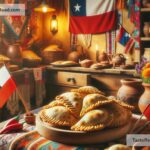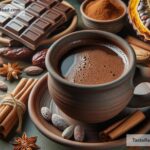Celebrating Chinese Mooncakes During Mid-Autumn Festival
The Mid-Autumn Festival, also known as the Moon Festival, is one of the most important and traditional celebrations in Chinese culture. It is held on the 15th day of the 8th lunar month, which usually falls in September or October. Families gather together to enjoy good food, honor the full moon, and express gratitude for the harvest. One of the most beloved traditions of this holiday is sharing and eating mooncakes, which are rich in history, meaning, and flavor.
What Are Mooncakes?
Mooncakes are round pastries with a thick filling inside. Their round shape symbolizes the full moon, unity, and family togetherness. People give mooncakes as gifts to friends, family, and colleagues during the Mid-Autumn Festival to share happiness and good wishes.
Traditionally, mooncakes come in many flavors, but the most common ones are sweet with fillings like lotus seed paste, red bean paste, or nuts. Some mooncakes also have a salted egg yolk in the center to represent the moon. In modern times, creative fillings such as chocolate, ice cream, green tea, and durian have become popular, making mooncakes enjoyable for younger generations and those with different tastes.
History and Meaning of Mooncakes
Mooncakes are deeply rooted in Chinese history and culture. The legend of Chang’e, the Moon Goddess, is often associated with the Mid-Autumn Festival and mooncakes. According to the story, Chang’e took a magic elixir and flew to the moon, where she lives to this day. People celebrate the Mid-Autumn Festival to remember Chang’e, admire the bright moon, and pray for happiness and good fortune.
Another historical story connects mooncakes to the overthrow of the Mongol rulers during the Yuan Dynasty. Rebels used mooncakes to hide secret messages and spread plans for a surprise attack. Since then, mooncakes have remained a symbol of unity and hope.
Beyond legends and history, mooncakes carry a deeper meaning. Sharing mooncakes brings families closer and strengthens relationships. The festival is a time for reunion, much like Thanksgiving or Christmas in Western cultures. Eating mooncakes reminds people of their loved ones, even if they are far away.
How Are Mooncakes Made?
Mooncakes are made using traditional tools and techniques. The outer layer, called the “skin,” is usually made from flour, sugar, and oil to create a soft, doughy shell. The filling is prepared separately and pressed into the dough. Skilled bakers shape the mooncakes using special molds, which often feature designs of flowers, the moon, or Chinese characters that represent blessings or good fortune.
The mooncakes are carefully baked until they become golden brown. Because of their detailed designs, making mooncakes requires patience and experience. Some families choose to make mooncakes at home using easy recipes and modern tools, while others prefer to buy them from bakeries or stores.
Regional and Modern Variations
Mooncakes vary from region to region across China. For example, Cantonese-style mooncakes from southern China are famous for their sweet fillings and delicate texture. In Suzhou (a city near Shanghai), people enjoy savory mooncakes with meat or onion fillings. In Beijing, snow-skin mooncakes are made with a soft, glutinous rice crust and are served chilled, giving them a refreshing taste.
In recent years, mooncake makers have gotten very creative with new flavors and designs. Bakeries now offer trendy fillings like coffee, mango, taro, or even custard. Some mooncakes are beautifully packaged in colorful boxes, making them ideal gifts. These modern versions attract younger generations and international audiences, helping the tradition continue and evolve.
Mooncakes Around the World
As Chinese communities have spread across the globe, so has the tradition of mooncakes. Countries like Singapore, Malaysia, Vietnam, and Thailand also celebrate the Mid-Autumn Festival with their own unique mooncake flavors. Westerners have increasingly embraced mooncakes too, appreciating the flavors, symbolism, and festive spirit they bring.
For food enthusiasts traveling to China during the Mid-Autumn Festival, tasting mooncakes is a must. Many cities host mooncake fairs where you can try different kinds and learn more about their history. Even outside China, many Chinese restaurants and supermarkets sell mooncakes during the festival season.
A Symbol of Family and Tradition
Mooncakes are not just delicious treats; they are an important cultural tradition. They represent family, reunion, and gratitude for the blessings of life. Eating mooncakes under the full moon is a meaningful and joyful experience that brings people closer during the Mid-Autumn Festival.
If you ever get the chance to try mooncakes, whether at a festival or as a gift from a friend, savor them slowly and appreciate their rich flavors and deeper meanings. Like the full moon shining brightly in the sky, mooncakes remind us to cherish the people we love and to stay connected with our roots.
Celebrating with mooncakes is a timeless tradition that warms the heart, and it’s something everyone can enjoy—no matter where they are in the world.


